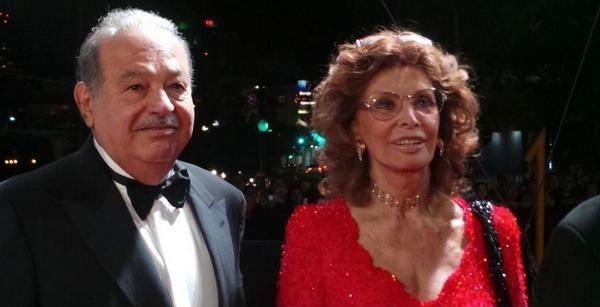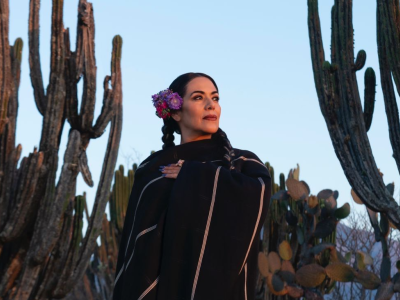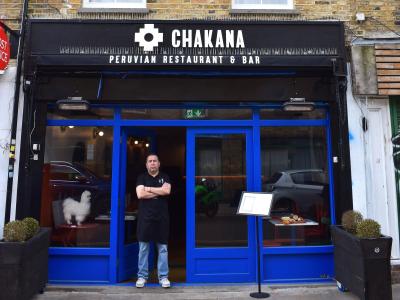Slim is Carlos Slim (Salim in Arabic), the magnate with more than 200 companies to his name. These vary from Telmex, the phone company that propelled him into the club of the super-rich, the Sanborn chain of restaurants famous throughout Mexico, cement and construction companies, but also Saks Fifth Avenue and shares in the New York Times newspaper, among many others.
It was Carlos’ father Julian Slim Haddad who came to Mexico in 1902, when there was already a small, closely-knit community of Christian Lebanese traders and their families established in the capital and other cities.
Julian Slim was a trader in silks and other fabrics, at first trading door-to-door, and then in several stores.
However, it was during the worst years of Mexico’s revolution from 1910 to 1920 that the Lebanese traders adopted a tactic that was also to serve Carlos well many years later.
With the country in political turmoil, many businesses and properties were up for sale cheaply. The Lebanese, who stayed out of the political struggles, bought when others were desperate to sell.
After entering the family business, Carlos (born on 28 January 1940 in Mexico City) soon started to strike out on his own, first buying a bottling plant in the southern state of Oaxaca, soon using the profits from that business to move into real estate and other companies in the Mexican capital.
But it was at the end of the 1980s that Slim seized the opportunity to really expand his businesses and his fortune. This was under the presidency of the PRI’s Carlos Salinas de Gortari, when a collapse in the Mexican banking system led to the first big sell-off of state-owned companies.
Among those up for grabs was the national telephone company, Telmex. Carlos slim was quick to seize his chance, and bought Telmex with other foreign investors.
Although his critics say that this has since given him a monopoly on the telephone system, as Osorno is careful to point out, Slim has always maintained that he only actually owned some 4% of Telmex at the start.
What is undeniable is that he was one of the first in Mexico to realize that with the opening of the economy under Salinas de Gortari, provided great opportunities to raise capital internationally, and then invest in the newly-privatized Mexican firms.

Called a giant among Lilliputians by Jon Lee Anderson in the book’s prologue, both he and Osorno stress that it is Slim’s financial acuity, combined with his ability to play the political system in Mexico, that enabled him to convert his millions of dollars into billions, and to catapult him into the top five of the Forbes annual list of the world richest people: in 2015 the magazine put his worth at US$77 billion, second only to Bill Gates.
As Osorno points out, the figure of Slim- whose companies are said to account for some 40% of all those quoted on the Mexican stock Exchange- is much closer to that of the Russian oligarchs who profited from the collapse of the Soviet Union in the early 1990s than to Bill Gates or Warren Buffet, known for their generous philanthropy.
Slim has managed to continue to operate with whoever has been in power- in Mexico, even after the political transition to the right-wing PAN under President and Vicente Fox in 2000, and again with Peña Nieto and the PRI since 2012.
His attitude towards politicians in general was expressed in one of the conversations Slim had with the author during the writing of the book: “I think that a businessman can do with one dollar what a politician is unable to do with two or three dollars.”
It was in this spirit that he collaborated with the left-wing PRD mayor of Mexico City Andres López Obrador at the start of 21st century. Between the two of them they elaborated a far-reaching plan to rehabilitate the historic centre of the city around the Zocalo and the Alameda, which had suffered from years of neglect and been badly hit by the 1985 earthquake.
As before, Slim’s tactic was to buy when others were selling cheaply. He became the owner of some 120 properties in the heart of the city- from hotels to historical buildings.
He them refurbished them, and with the help of the mayor who got rid of street vendors and brought in more police, ordinary Mexicans and tourists began to return to the area. This meant of course that the real value of Slim’s properties has increased accordingly, and so once more he was in a win-win situation.
Not content with this development, in recent years Carlos Slim has embarked on the creation of a whole new neighbourhood in the north of the city. On land that was once market gardens, he has created the area of Nuevo Polanco, popularly known as ‘Ciudad Slim’.
This is his dream of what Mexico City should be in the 21st century. Gleaming skyscrapers with upmarket apartments and shopping malls, and at the centre his Museo Soumaya, named after his wife, who died in 1999, and designed by his son-in-law.
The glittering museum, known irreverently by taxi-drivers as ‘the big mushroom’ houses Slim’s heterogeneous collection of art works and other rarities, from coins to Asian ivory sculptures. Purists have poured scorn on it for its lack of focus, but it is free and well attended.
Now aged 75, Carlos Slim shows little signs of slowing down. He is keen to invest more in Mexico, and enjoys the friendship of people like Bill Clinton, Larry King, and perhaps more surprisingly Sophia Loren, for whom he organised a sumptuous 80thbirthday party in Mexico City.
Like many others, Osorno finds himself actually liking his subject, and ends up wondering if ‘the richest man in the world can be a good person’.
His book leaves it to the reader to judge, but the author concludes that it is precisely because there are 50 million poor in Mexico that someone like Carlos Slim can become the richest man on the planet.
This article was written by one of Latin America Bureau's group of analysts. If you'd like to read more current affairs articles by LAB visit www.lab.org.uk

















